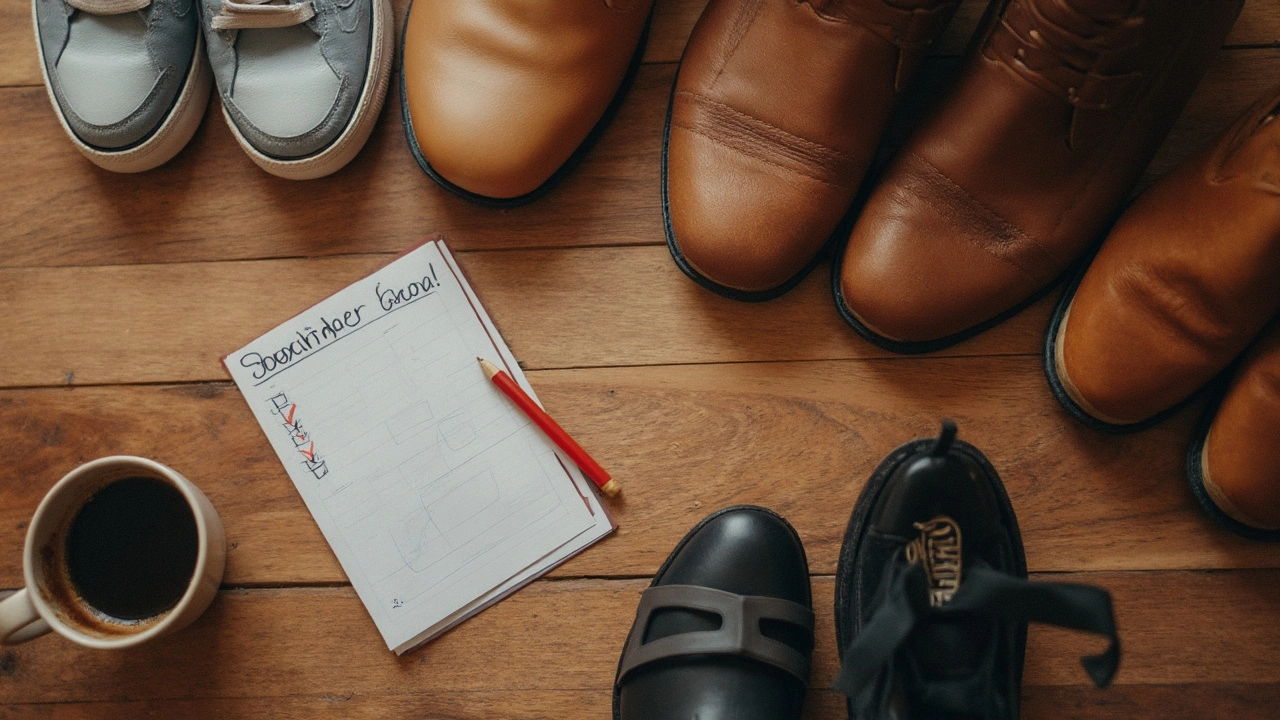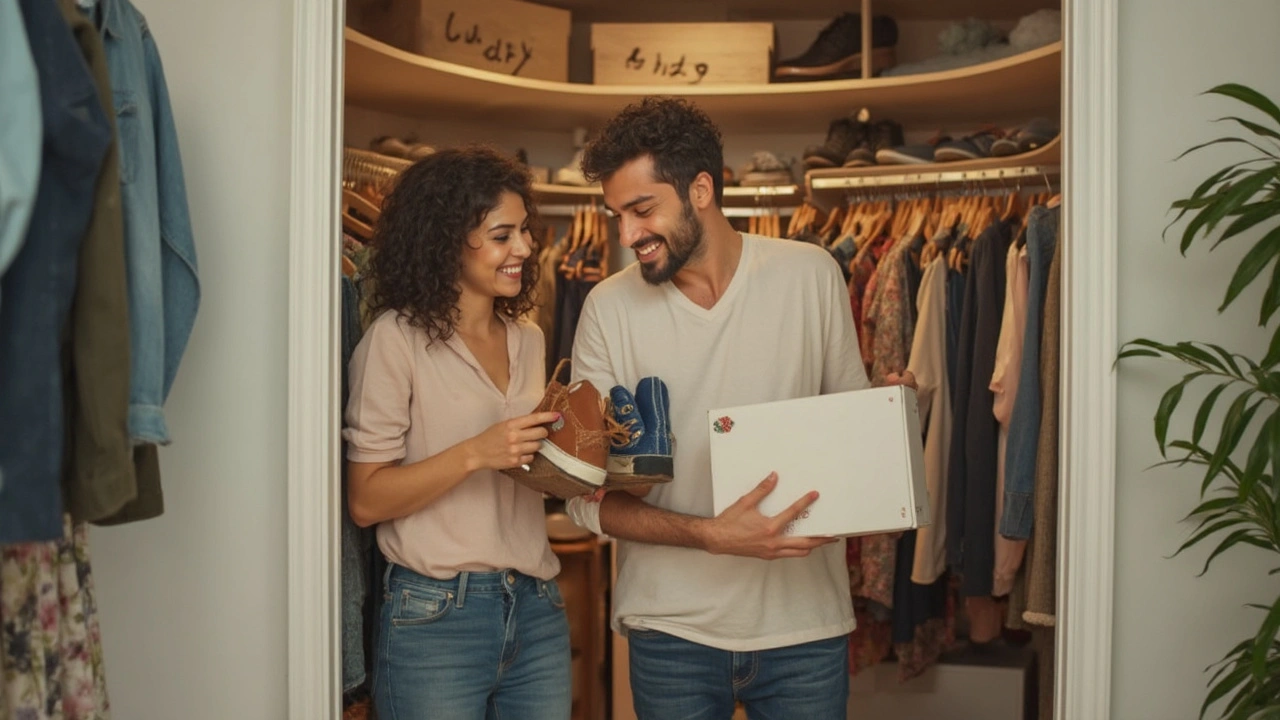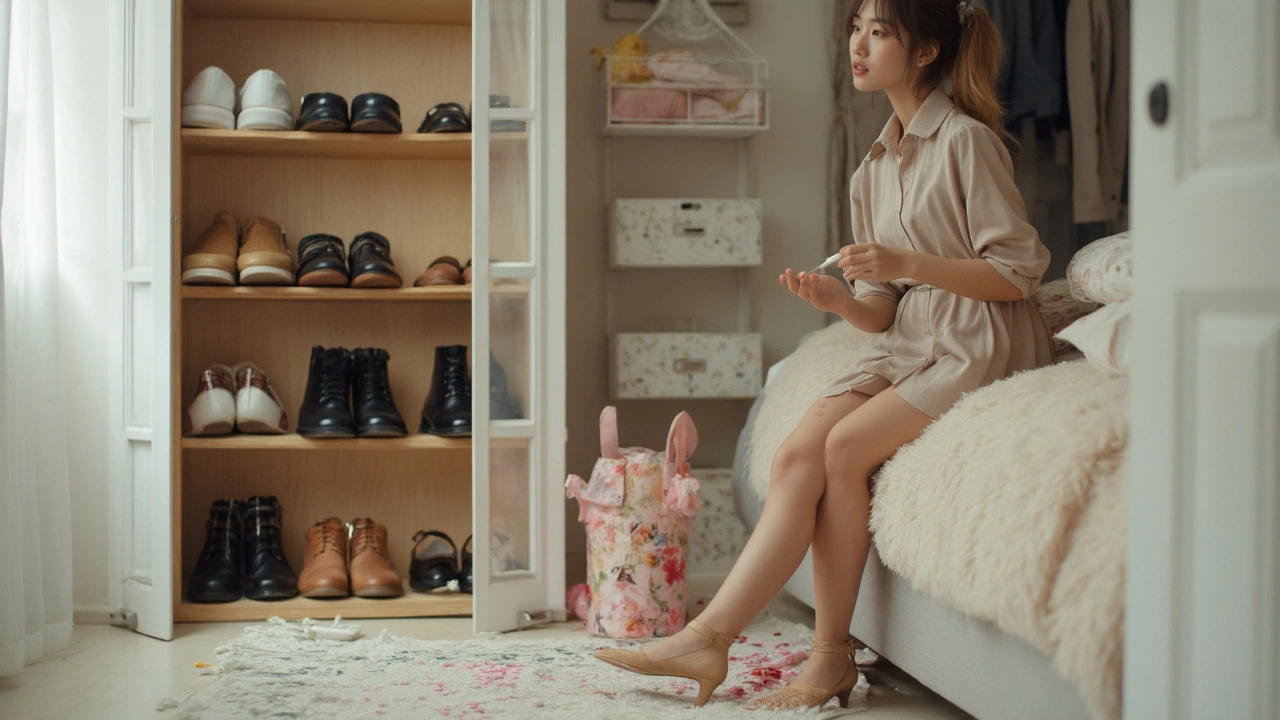You know that sense of dread when you stare at a shoe rack overflowing with options, yet somehow feel like you have nothing to wear? Or maybe you’re chasing that idea of a clutter-free, handpicked closet—the kind you see on Instagram, every shoe in its spot and loved. Here’s a shocker: Most women in the US own an average of 19 pairs of shoes, yet usually cycle between six to eight. So, if you’re trying to build a capsule wardrobe and wondering how many shoes you actually need, you’re probably overcomplicating it. The magic number is smaller than you think—and nailing it isn’t about deprivation, it’s about being sharp with your choices.
Rethinking Your Shoe Collection: What Really Belongs in a Capsule Wardrobe?
Capsule wardrobes aren’t just for minimalists or those who can live with five shirts. It’s about owning less but better—it’s intentional, simple, and honestly, it frees up mental space you didn’t even know you were wasting. Start with the ground rule: Every pair in your capsule needs a clear purpose and must work with at least three different outfits. If something sits at the bottom of your closet and only sees the light during that one wedding every few years, cut it loose.
Here’s the key: Your lifestyle determines your essentials. Maybe you often commute by foot—that means comfy sneakers or flats are non-negotiable. If you work in an office, classic loafers or block-heeled pumps are smarter than trendy stilettos. Living in a rainy city? Boots need waterproofing, not just style points.
Let’s break out what actually earns a spot:
- Sneakers—Use them for workouts, running errands, or casual Fridays. White leather styles, or a muted color, play well with everything from jeans to summer dresses.
- Flats/Loafers—Great for days you need comfort but want something more polished than a sneaker. Ballet flats look classic, loafers feel more tailored.
- Ankle Boots—Wear them with skirts, jeans, or trousers. Real leather or vegan alternatives last longer and look sharper over time.
- Sandals—A strappy style for warm days or holidays, and a pair that can handle walking for hours.
- Pumps or Heeled Boots—Just one pair handles events, interviews, or fancier evenings out. Black or nude works universally.
For most people, five pairs cover pretty much every scenario you’ll meet in a regular year. That doesn't mean you can’t swap, say, boots for weatherproof sneakers if you live somewhere warm. The real rule? You shouldn’t need more than seven pairs for a truly functional capsule wardrobe. Anything more is just extra flavor, not necessity.

Why Less is More: The Case for a Minimal Shoe Capsule
So what’s the upside to cutting back? A 2023 study by the Fashion Retailers Association found people waste about 20 minutes a week deciding what shoes to wear—not just when picking but sometimes doubling back to swap pairs. That adds up to about 17 hours a year. Imagine spending that time sleeping or literally doing anything else. And 62% of respondents admitted they owned shoes they had worn only once—or never at all.
Now, think about cost per wear. Cheap shoes don’t just fall apart—they’re often uncomfortable. Let’s say you blow $50 on five trendy pairs each year, wear each just five times, that’s $2 per wear. Compare that to buying a $150 high-quality pair you reach for 70 times—just about $2.14 per wear, but the second option fits better, looks smarter, and doesn’t land in a landfill after 12 months. The win is obvious. Capsule thinking saves cash and the planet, since shoes are a major source of waste, especially synthetic ones that can barely be recycled. According to a 2024 World Footwear report, up to 24 billion pairs are produced globally each year; 90% end up in landfills, and the bulk are worn less than ten times. By focusing on a tight edit, you become part of the solution, not the problem.
There’s a mental perk, too. Fewer shoes, no clutter, no guilt over unworn pairs. When you love and care for the shoes you own, you keep them polished and they last longer. You stop chasing new trends that only stick around for a season. Instead, you focus on timeless silhouettes that somehow always look current. There’s something powerful in knowing exactly what’s on your shoe rack, with every pair ready to put in work.
Let’s get real—most repeat buys happen because you don’t remember what you already own or can’t find it. Data from a 2023 footwear retail analytics survey found that 38% of people make duplicate shoe purchases simply because they forgot they already had a similar style. A capsule wardrobe blocks that from happening, saving you from wasting energy, space, and money. Less is actually more satisfying.

How to Build Your Ideal Shoe Capsule: Tips, Tricks, and Real-Life Advice
So, how do you actually go from a floor covered in shoes to that breezy, edited lineup? Here’s the honest approach:
- Audit ruthlessly. Pull out every shoe you own. Line them up and try them all on. If your feet hurt, if you have to force a smile, or if you can’t think of three outfits, out they go. Don’t keep guilt-pairs (“but they were expensive!”) or nostalgia items you haven’t worn in years.
- Anchor with essentials. Pick your go-to for each core category: one sneaker, one loafer or flat, one pair of boots, one pair of sandals, and one dressier shoe. This becomes your core capsule of five.
- Adapt for personal life. Do you need hiking boots for weekend adventures? Special shoes for medical needs? Add just what you’ll genuinely use (and nothing you just wish you used!).
- Match everything. Stick with neutral colors for most pairs: black, white, tan, or a deep brown. If you love bold colors, let one pair be your signature pop—maybe red flats or emerald pumps. The fewer your shoes, the more versatile they must be.
- Quality first. Choose real leather, eco-friendly options, or brands known for durability—you want pairs that still look great after hundreds of wears, not ones falling apart after the season changes.
People worry they’ll get bored with just a handful, but here’s the secret: Switching up laces, adding shoe clips, or rotating with fun socks and tights staves off the sameness. Washing, polishing, and storing shoes properly means they last far longer. If space is super tight, a hanging organizer or clear shoeboxes keep everything visible and fresh.
No shoe capsule has to be forever. As seasons, jobs, or personal styles change, reassess your lineup once or twice a year. You’ll sometimes want to swap a sandal for additional boots or add special rain or snow footwear. But if you ever start creeping above nine pairs, take a hard look—something extra may have snuck in without earning its place.
Here’s a handy table to sum things up and help you make those cut-or-keep decisions:
| Category | Ideal Capsule Quantity | Use Case | Key Feature |
|---|---|---|---|
| Sneakers | 1 | Casual, workouts, errands | Neutral, easy to clean |
| Flats/Loafers | 1 | Daily wear, office, travel | Comfort, versatile |
| Ankle Boots | 1 | Cooler weather, events | Weather resistant |
| Sandals | 1 | Warm weather, vacation | Sturdy, stylish |
| Pumps/Heeled Boots | 1 | Nights out, meetings | Classic cut, neutral color |
If you find yourself always ignoring a pair, or if they’re only there for “just in case” or “maybe one day,” that’s a clue they shouldn’t be in your capsule. Life is too short, and closets too small, to make space for things you don’t use and love.
Minimal shoe capsules aren’t about deprivation or rules. They’re about giving your time and attention back to yourself, simplifying decisions when mornings are busy, and never feeling like you have the wrong shoes for the job. When every pair earns its keep and brings a spark of confidence, you’ll wonder why you ever had the rest.


Write a comment